BRAMBLE

© Raymond Small TQ4792 11/06/2024
Rubus agg.
In Britain there are several hundred species of bramble that thrive in a range of habitats. Most are self-fertile, others are pollinated by insects visiting for nectar and pollen. Blackberries the fruits that appear after the flowers become a vital food source for all types of creatures.
HIMALAYAN BALSAM
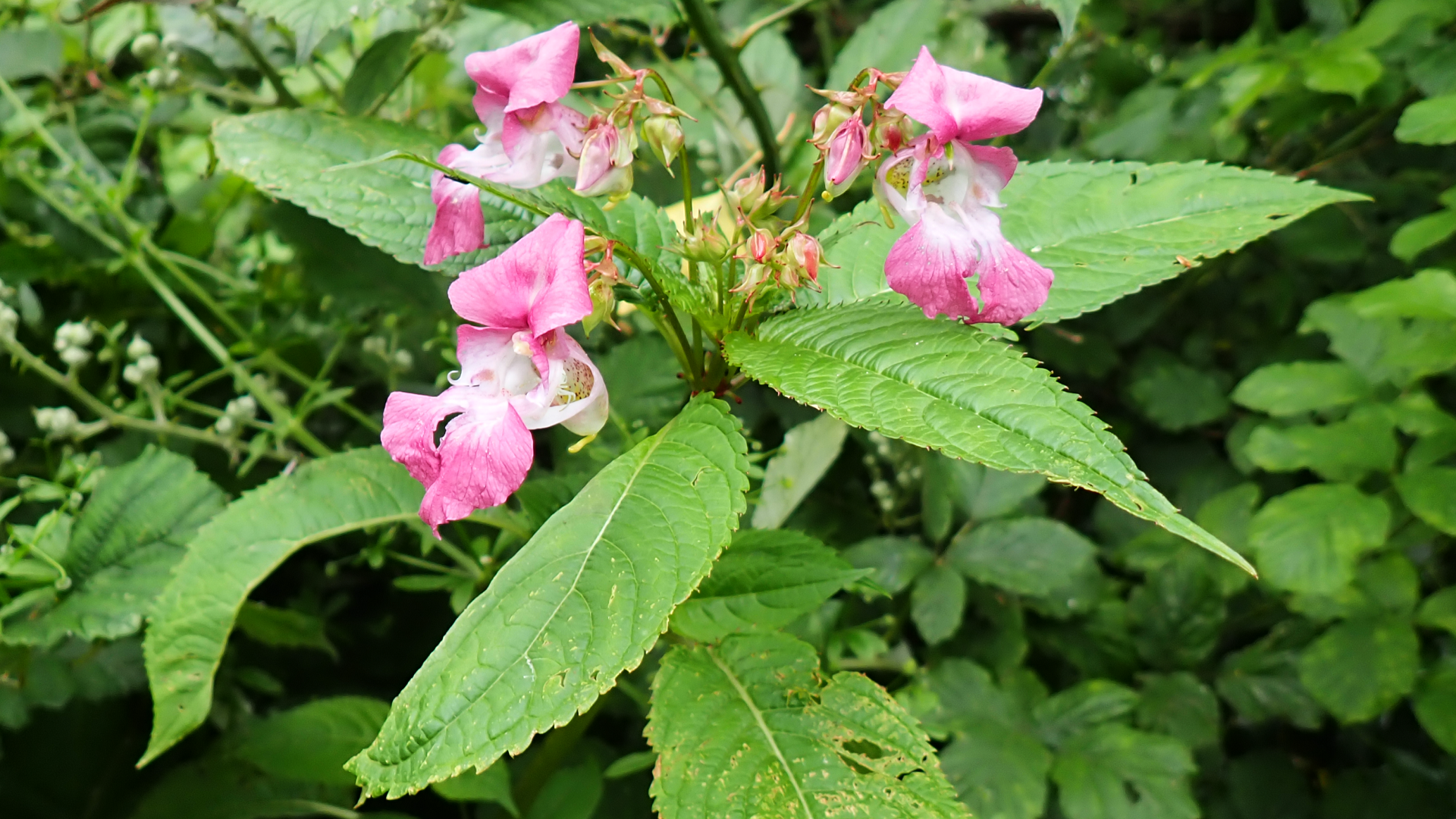
© Raymond Small TQ4792 12/06/2024
Impatiens glandulifera
Himalayan balsam is an invasive plant often found near inland water. It was introduced to Britain in 1839 by Victorian plant hunters who liked its beautiful pink flowers and exploding seed pods.
WATER BOATMAN
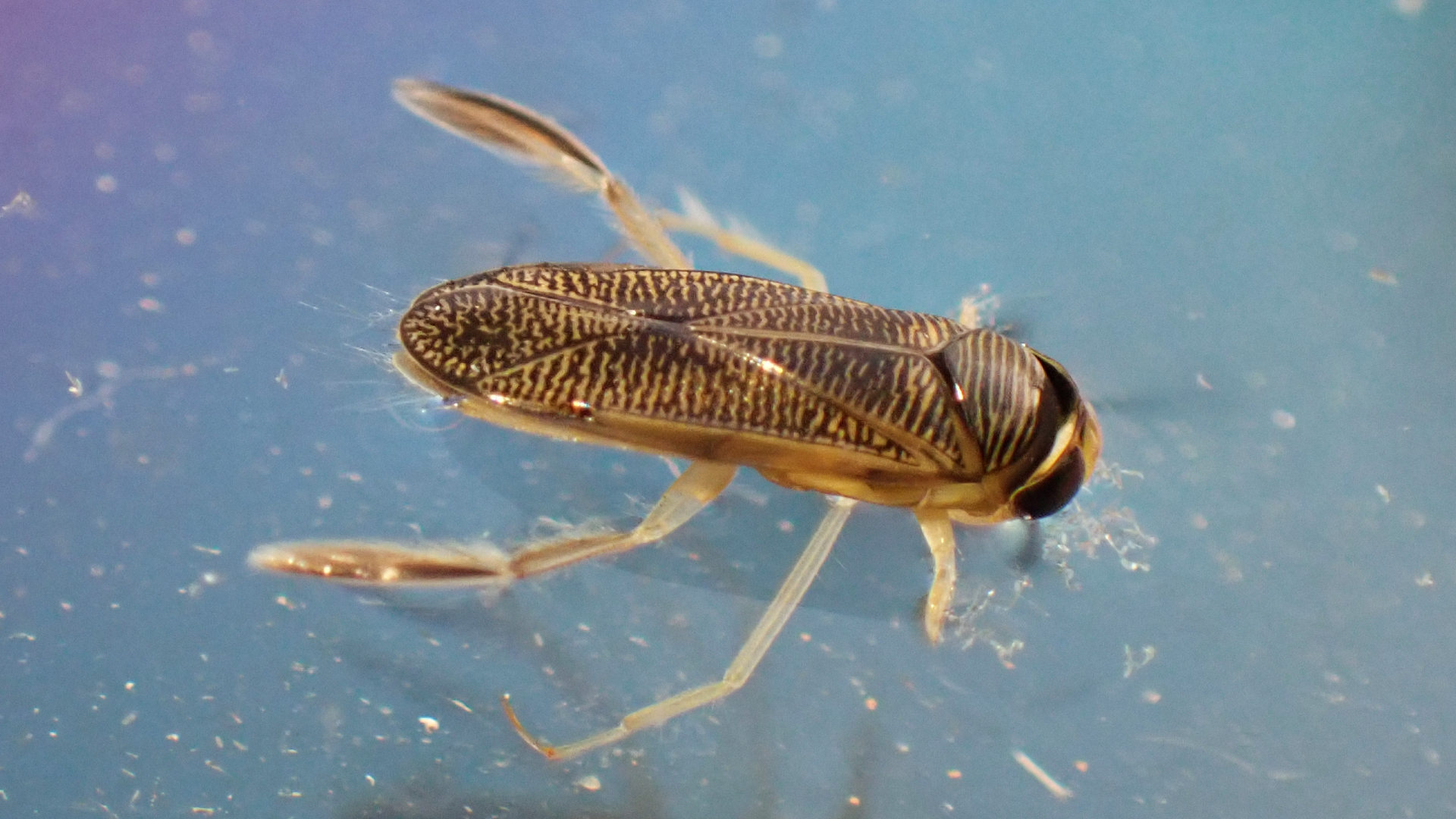
© Raymond Small TQ4692 23/06/2024
Corixidae
Water boatmen belong to a family of aquatic bugs containing around 500 species worldwide. They tend to have four long rear legs and two short front ones. The forelegs are covered with hairs and shaped like oars. These bugs can fly. This particular specimen was attracted to ultraviolet light being emitted from a moth trap. It was placed in a petri dish containing water to show it swimming right side up. There is another group of insects known as 'Lesser water boatmen' or 'Backswimmers' that usually swim upside down and tend to spend less time at the surface. Water boatman have long spiked mouthparts for puncturing and sucking prey. Their bite is venomous and they have no hesitation in using that spike and venom if handled.
WHITE DEATH SPIDER
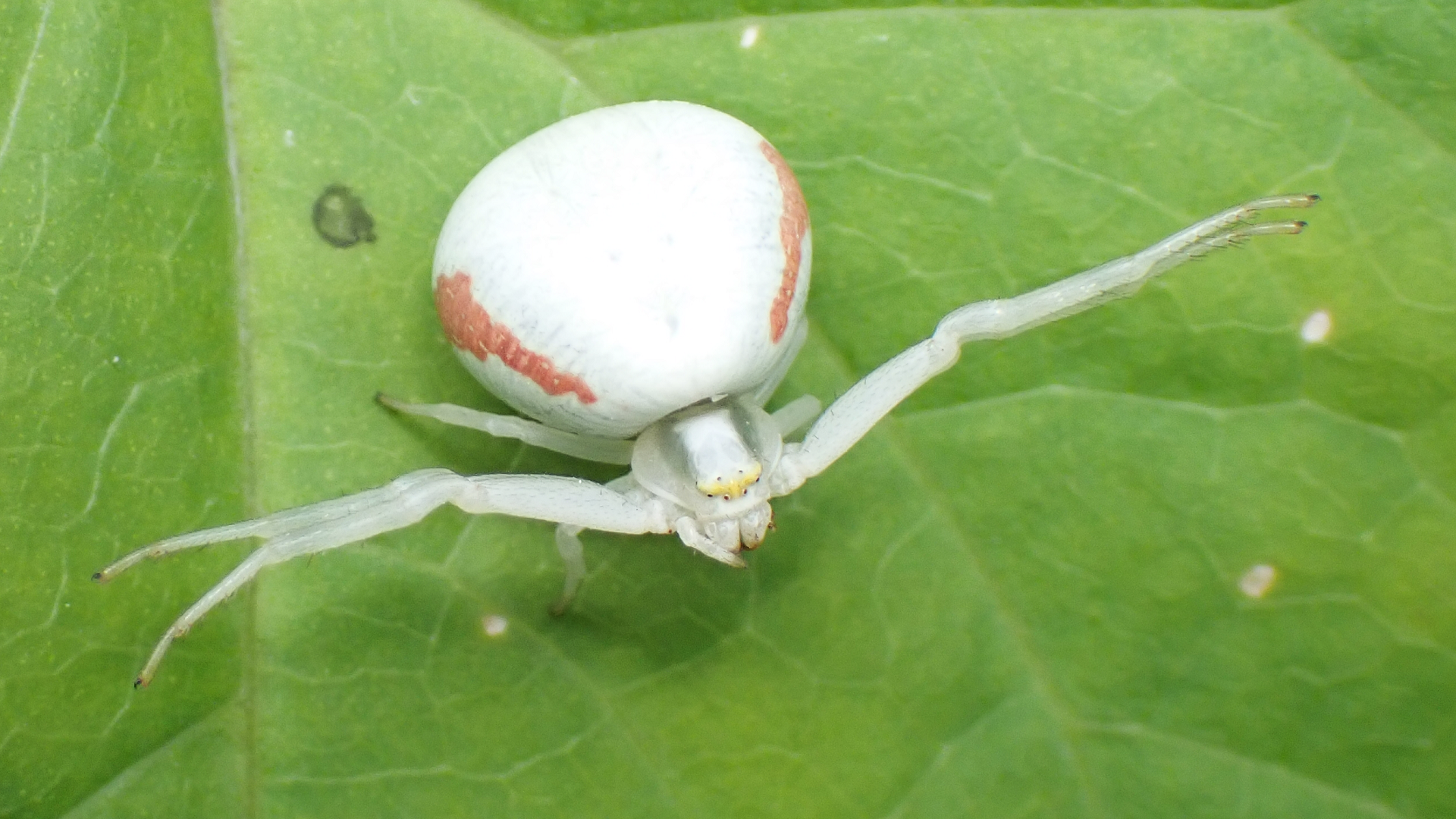
© Raymond Small TQ4793 10/06/2024
Misumena vatia
This spider is frequently found on flower-heads during summer with front legs apart ready to ambush a passing victim. The spider grabs victims and subdues them with venom; it does not spin webs to catch prey. Mature females have the ability to change colour from white to yellow allowing them to blend in with surroundings.
49.014 Brown Oak Tortrix
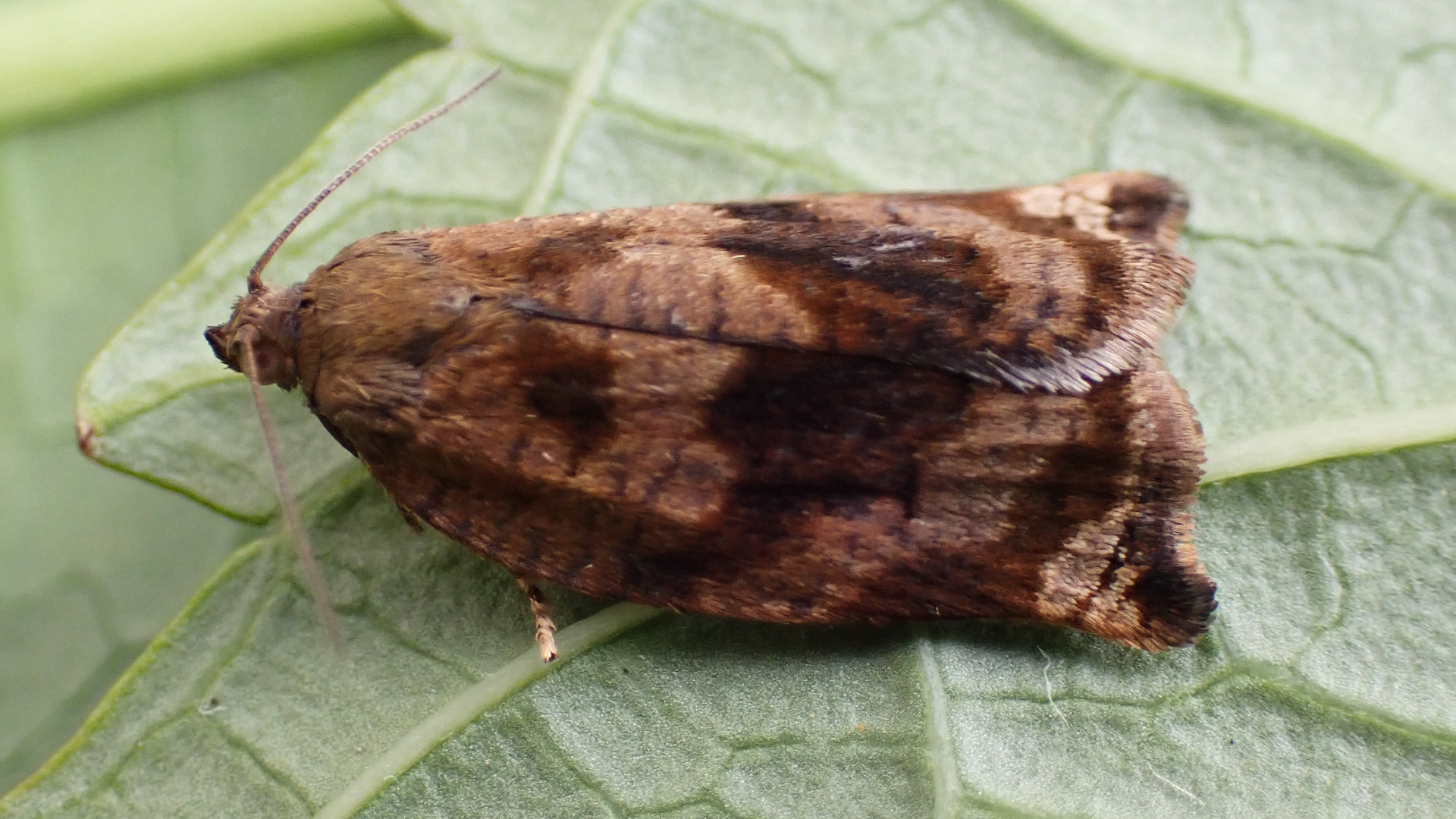
© Raymond Small TQ4692 09/06/2024 Female
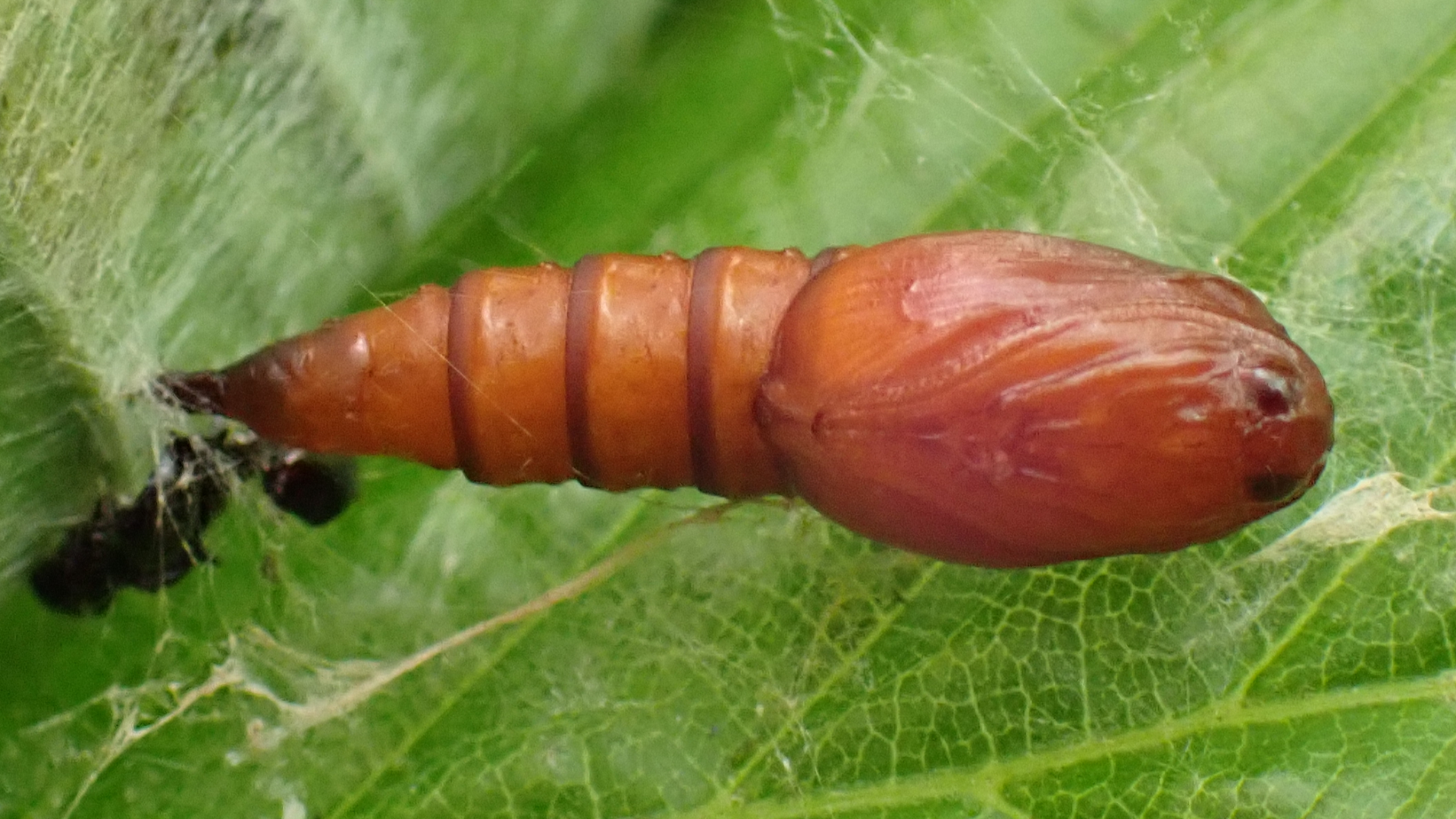
© Raymond Small TQ4793 06/06/2024 Pupa
Archips crataegana
The caterpillar of this species feeds on a range of deciduous trees from inside a tightly-rolled leaf. Its pupa is attached to a leaf by webbing from which an adult will emerge. This moth is widespread across Britain but is not very common. It frequents mainly wooded habitats and flies from June to August. Adult females are larger with a darker ground colour than males and have a much more protruding apex on the forewing.
49.294 Bramble Shoot Moth
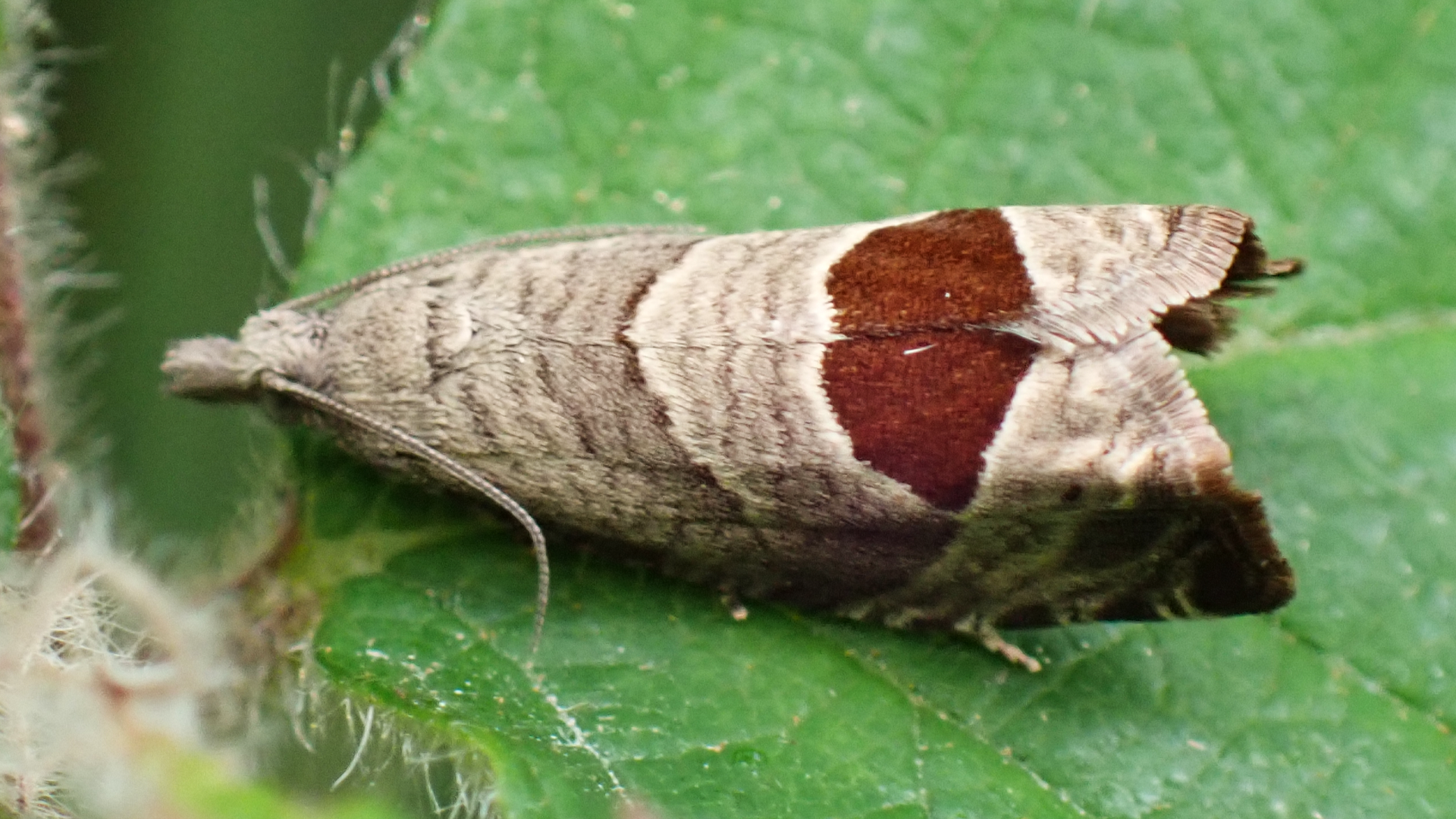
© Raymond Small
TQ4793 06/06/2024
Notocelia uddmanniana
This species was previously known as the 'Bramble shoot', but has recently had its name changed to the 'Bramble shoot moth'. It flies in June and July and is common in woodland and on hedgerows where bramble exists which is the larval foodplant. The large reddish-brown or chocolate-brown marking on the wings makes this a fairly easy species to identify.
49.332 Pine Bark Moth

© Raymond Small TQ4692 23/06/2024
Cydia coniferana
This species is listed as nationally scarce and there are not many records in Essex. It flies around conifers during afternoon sunshine and at dusk from May until August. The larvae live in a silk-lined tunnel under pine bark. Previously known as the Pine-bark piercer.
IRIS SAWFLY
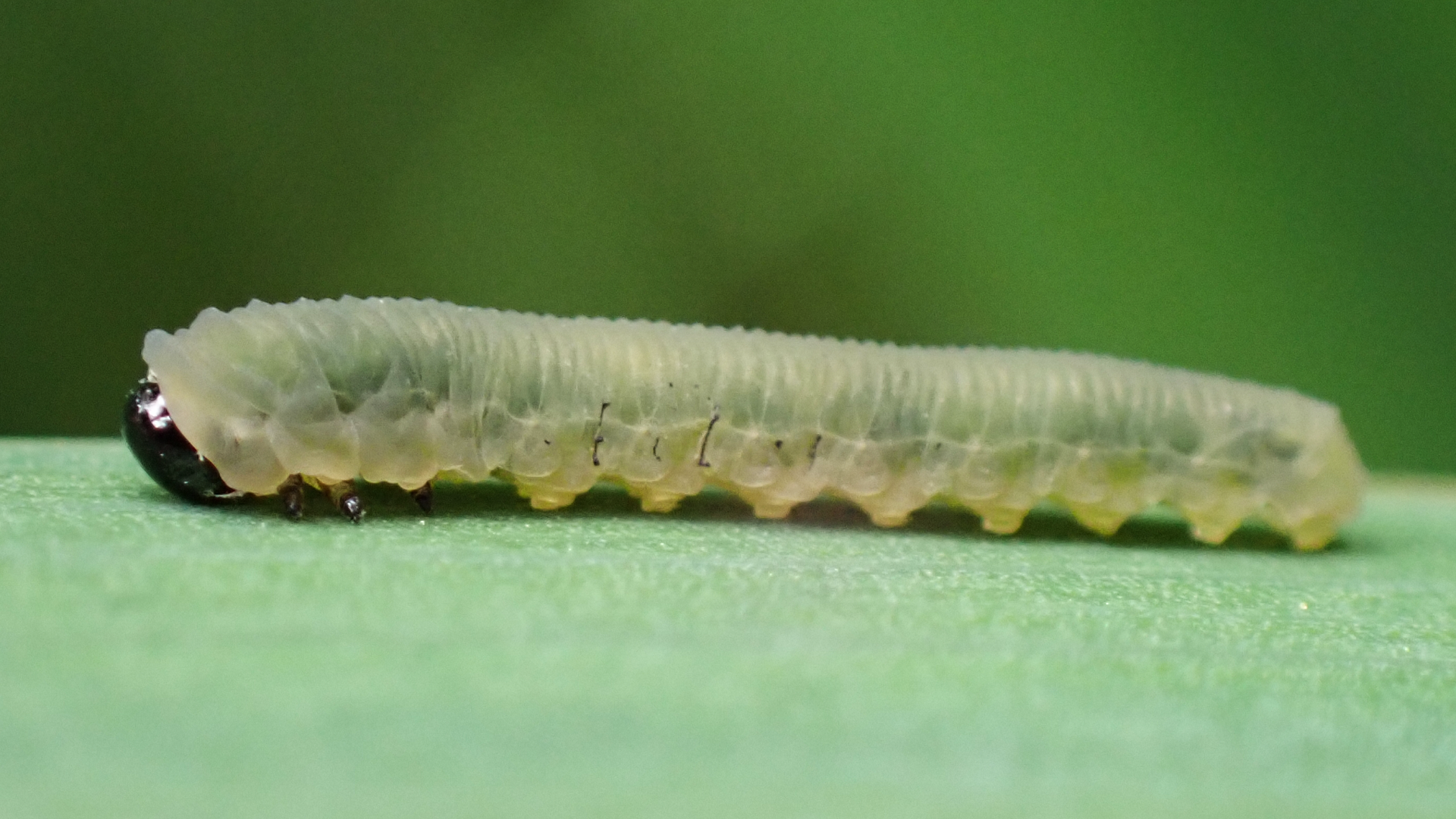
© Raymond Small TQ4793 06/06/2024
Rhadinoceraea micans
The totally-black adult sawfly is usually found flying where Yellow Iris the larval foodplant grows. Its larvae feed on plants growing in damp locations consuming strips from the leaf edges. Adults appear during late spring and summer.

